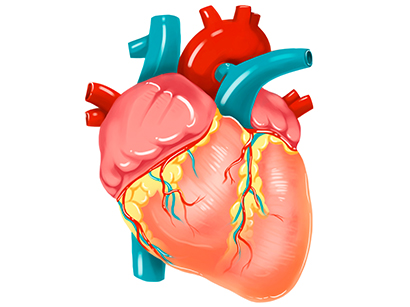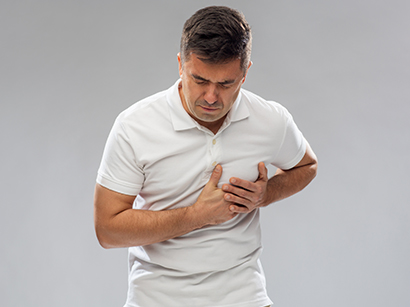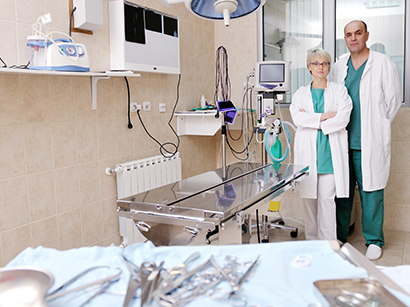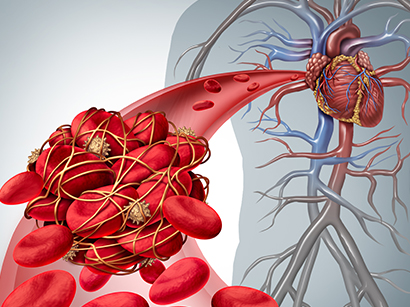Find information on diseases & conditions, and treatment & procedures
Cardiology
Heart Valve Disease
Overview
There exist four valves in your heart which function as doors enabling
the blood to circulate inside the heart and through the body.
When the valves are affected by infection or other heart conditions, valves
become thick or stiff or fused together.
This disrupts the blood flow by not opening and closing the valves properly
and causes heart dysfunction(heart failure, blood clots, heart rhythm
abnormality, stroke, and death).
Heart valve disease could also present at birth.


Symptoms
- Heart murmur diagnosed by doctor
- Difficulty in breathing
- Fatigue
- Swelling of body
- Dizziness
- Fainting
- Irregular heart beat
Treatments
1. Balloon Valvuloplasty
Minimally invasive procedure that widens narrowed valves by using catheter
equipped balloon on the tip. This procedure is ideal for patients (elder people,
infants) at greater risk of complications


1) Process of procedure
- From the insertion of catheter, the catheter's moving path is being watched
via X-ray throughout the procedure.
- Insert a long tube catheter through an artery in the groin or wrist until it reaches
the narrowed heart valve
- Guide the catheter to the narrowed location and inflate the balloon equipped at
the tip of catheter to widen the valve and then deflate it.
- The blood flow is now enhanced.
2) Expected duration of hospital stay
- Generally the procedure itself takes several hours.
- If there were not a complication occurred, the patient is expected to be hospitalized
to monitor the heart for a day or two days.
3) Post-operative care
- The patient will be monitored thoroughly in the hospital to ensure that he or she is
free of complications (bleeding, infection, fainting, and heart dysfunction)
- When the patient returns home, doctor will prescribe blood-thinning medications and
provide instructions for the care.
4) Ideal outcomes
- Breathing is easier
- Enhanced blood circulation through the body
- Improved exercise capacity
5) Risks
- Recurrence of narrowing
- Formation of blood clots
- Bleeding
This may occur from the area where it was catheterized.
- Heart attack, artery damage, kidney problems, stroke, abnormal heart rhythms may
occur during the procedure.
- Stroke & Death
6) Treatment cost
- Expected cost ranges from to.
2. Heart Valve Replacement
If patient's heart valve is unable to be repaired, doctor may suggest this open heart
surgery that replaces diseased valve with an artificial valve, or a valve made by animal
tissue (pig and cow) or a valve from human.


1) Process of procedure
- During the surgery, patient's heart will be either on heart-lung bypass device taking over
the role of the heart throughout the surgery or on equipment that restrains the heart to
minimize its movements during the surgery. Some hospitals perform surgery using robotics
to maintain the surgery minimally invasive.
- -Begin general anesthesia (patient's breathing will depend on ventilating machine)
- -Give an incision to the chest
- -Remove diseased valves from the heart
- -Connect an artificial valve, or a valve made by animal tissue (pig and cow) or a valve from
human to the heart so that the heart valve now work properly and whole body is sufficiently
nourished via circulating blood.
2) Expected duration of hospital stay
- A week to two weeks of hospital stay is expected in total.
- Generally the procedure itself takes up to 3 - 5 hours.
- A day or two days of Intensive care unit stay is required.
3) Post-operative care
- While patient is cared in Intensive care unit, he or she will still be on ventilator until
the patient is able to breathe on their own.
- The patient will be monitored thoroughly in the hospital to ensure that he or she is
free of complications (bleeding, fever, infection, fainting, abnormal discharge from the
chest and chest pain)
4) Ideal outcomes
- Patient returns to daily routine within six to 12 weeks as is general.
- Breathing is eased
- Chest pain is gone
- Exercising capacity is enhanced
5) Risks
- 2~10 mortality
- Bleeding after surgery
- Infection that may require another surgery
- Stroke, heart failure, renal failure and pneumonia might occur post surgery
- May require another replacement surgery due to deterioration of valve's function
10 years after surgery.
6) Treatment cost
- Expected cost ranges from to.








 Inquiry
Inquiry Find Doctor
Find Doctor
